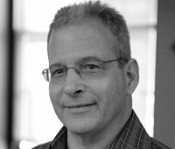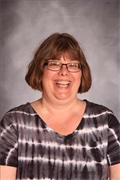
Richard Lehrer
Peabody College of Education and Human Development
Vanderbilt University
rich.lehrer@vanderbilt.edu
website

Carmen Curtis
Verona School District
Verona, Wisconsin
curtisc@verona.k12.wi.us

|
Richard Lehrer Peabody College of Education and Human Development Vanderbilt University rich.lehrer@vanderbilt.edu website |

|
Carmen Curtis Verona School District Verona, Wisconsin curtisc@verona.k12.wi.us |
| Participants: | Wisconsin |
| Type of Study: | classroom recording |
| Location: | USA |
| Media type: | video |
| DOI: | doi:10.21415/T5V890 |
Lehrer, R., & Curtis, C. L. (2000). Why are some solids perfect? Teaching Children Mathematics, 6(5), 324.
Strom, Dolores, Kemeny, Vera, Lehrer, Richard, & Forman, Ellice (2001) Visualizing the emergent structure of children's's mathematical argument. Cognitive Science, 25, 733-773. PDF
In accordance with TalkBank rules, any use of data from this corpus must be accompanied by at least one of the above references.
The Curtis corpus is comprised of digital video of a second-grade classroom participating in a 14-day Geometry in Design unit (Watt & Shanahan, 1994). These data originated from an Office for Educational Research and Improvement funded project conducted by Richard Lehrer between 1992 and 1995. Readers are encouraged to refer to Jacobson and Lehrer (2000), Strom, Kemeny, Lehrer, and Forman (2001), and Lehrer et al. (1998) for additional details about the original project.
The transcripts for the Curtis classroom videos were created during Summer 2006 and 2007 using the CHAT transcription system (MacWhinney, 2000). The video data were transcribed by RaEsa Benjamin-Wardle of Ithaca College and Sarah E. Puckett of University of Virginia, two Pittsburgh Science of Learning Center summer interns. Additional transcribers were Joshua Boston, an undergraduate student at Carnegie Mellon and Marnie Arkenberg, and NIMH postdoctoral researcher.
It is important to note that not all of the video provided by Richard Lehrer have been transcribed. The transcripts provided were created for the use of a specific project on children's developing conceptual understanding and pertain only to relevant episodes of classroom discourse. There are other Curtis corpus videos listed under the audio and media section of Talkbank.org that have not been transcribed. Much of this untranscribed data consist of small group work by children, teacher and child interviews, and computer activities.